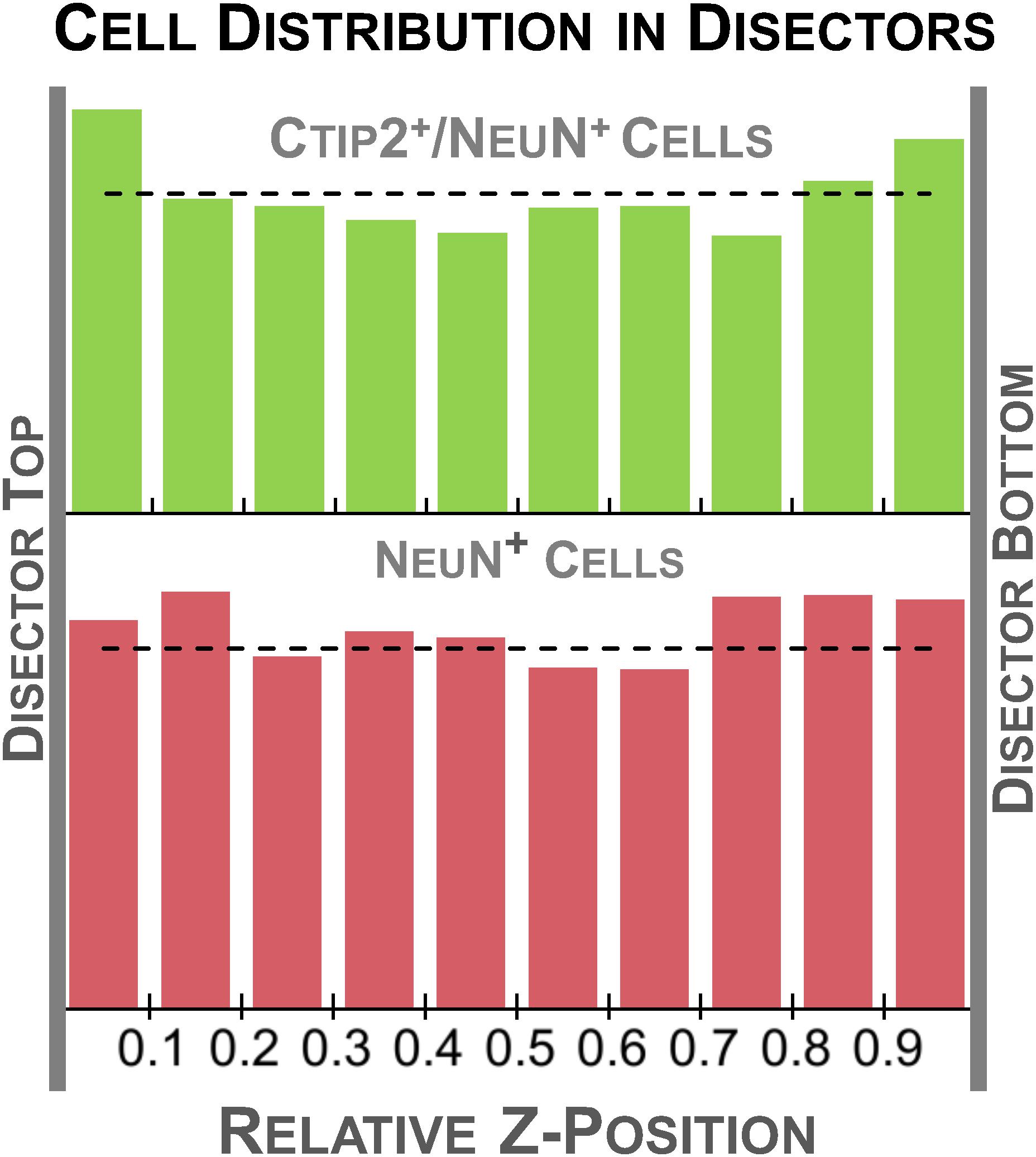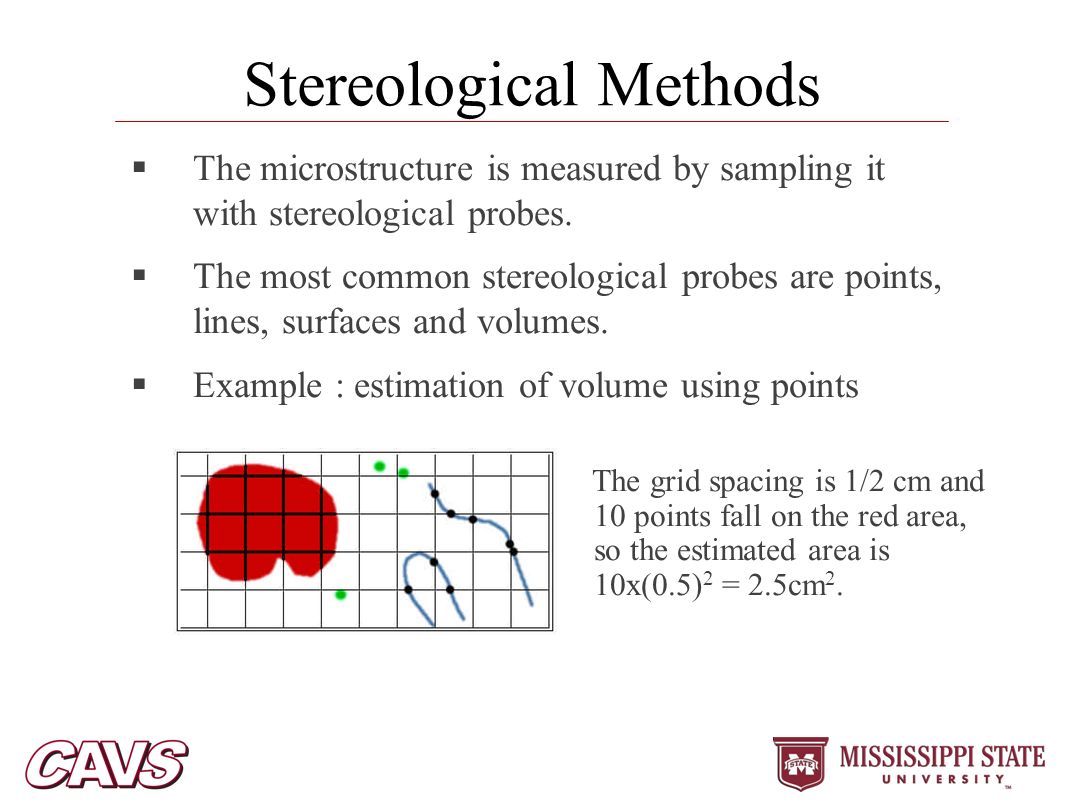
and Jensen E.B.V., Chapman & Hall/CRC, Boca Raton, page 2. “a body of mathematical methods, relating 3-D parameters defining the structure, to 2-D measurements obtainable on sections of the structure” -Stereology for Statisticians, 2005, Baddeley, A. “the science of inferring spatial structure from partial information, usually lower dimensional data, which is usually in the form of sections of projections of the structure of interest” -Sampling Theory for Opaque Spatial Specimens, 1976, Davy, P. Some additional definitions of stereology that appear in scientific literature are: Some research fields that employ stereological analysis include: The application of design-based stereological methods to the analysis of the central nervous system as well as other organs and tissues has contributed considerably to our understanding of the functional and pathological morphology of the body. The amount of probing can be adjusted depending on how regular or homogeneous the characteristic is, and also depending on how large the difference is between or among the means of the groups being studied.

If you follow rules that include making sure the interaction between the line-segment-probe and the surface is isotropic, the estimate of surface area will be unbiased.

Quantitatively, the relationship between the length of the line-segment-probe and the number of intersections counted to the amount of surface is known, so an estimate can be made. Qualitatively, the more events, in this example intersections, counted the more surface there is. For instance, if trying to estimate the amount of, or probing for, surface, it is most efficient to use line segments and count the intersections. In its most efficient form, ‘ events’, interactions between a virtual geometric probe and the feature being probed, are counted and used in mathematical formulas that are supported by simple geometrical concepts. The sampling procedure, also called the probe, is carefully planned ahead of time to avoid bias, and the amount of sampling is matched to the required precision.

Design-based stereology, also known as unbiased stereology, has improved the reliability and efficiency of quantification in biological research. Examples include nearest neighbor information in distributions of cells and connectivity among branching objects. Information about the relationship among objects can be estimated using second-order stereology. The area of something that appears in a plane is the ‘profile area’ or ‘cross-sectional area’.Įxamples include: number of brain cells within a brain region, the length of capillaries, the surface area of a membrane, the volume of a tumor, as well as the percentage of quartz in granite. Volume and Profile area-The volume of something is a measure of how it fills up space.Surface-Surface is the same as surface area, but surface is used to refer to the area of a shape that isn’t flat.Length becomes tricky when considering the length of things that twist and turn in space. Length-Length is a concept that is easy to understand, but not as easy to define formally.Determining the numbers of objects is not as simple as it may seem.



 0 kommentar(er)
0 kommentar(er)
